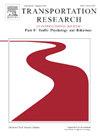设计意图在翻译中丢失了:协作转向期望和消费者对部分驾驶自动化驾驶的意愿
IF 3.5
2区 工程技术
Q1 PSYCHOLOGY, APPLIED
Transportation Research Part F-Traffic Psychology and Behaviour
Pub Date : 2025-02-01
DOI:10.1016/j.trf.2025.01.022
引用次数: 0
摘要
部分自动化(2级)系统具有可能影响驾驶员行为的设计因素,例如共享转向控制(即合作转向)。协同转向的一个基本特点是,当驾驶员在车道内转向时,车道中心支持保持打开状态。在进行这项研究时,福特和日产的系统具有这种合作设计理念,而特斯拉和通用汽车(GM)的系统则没有。我们对1,260名拥有特斯拉、通用、福特和日产等部分自动驾驶汽车的车主进行了一项在线多媒体调查,了解了他们对系统协同性的理解。结果我们发现,汽车制造商的设计意图并不总是转化为消费者的理解,因为来自所有车主群体的大多数受访者认为他们的系统是合作的。同样地,许多配备免提系统的司机认为他们可以长时间使用免提系统,而一些配备免提系统的人则认为他们不能这样使用系统。然而,在展示了不同危险程度的基于视频的驾驶情况后,我们发现,协作性具有特定情况的影响。具体来说,在所有情况下,与相邻车道上有大型车辆的非合作系统车主相比,合作系统车主更有可能将车转向车道一侧,并将手放在方向盘上。鉴于人们对驾驶员脱离驾驶和系统误用的担忧日益增加,我们的研究结果表明,协同转向不仅是一种相对直观的设计理念,而且可能有助于保持驾驶员的参与。本文章由计算机程序翻译,如有差异,请以英文原文为准。
Design intent gets lost in translation: Cooperative steering expectations and consumer willingness to steer with partial driving automation
Introduction
Partially automated (Level 2) systems have design factors that may influence driver behavior, such as shared steering control (i.e., cooperative steering). A fundamental characteristic of cooperative steering is that the lane-centering support remains on while the driver steers within the lane. At the time this study was conducted, Ford and Nissan systems had this cooperative design philosophy, whereas Tesla and General Motors (GM) systems did not.
Method
An online multimedia survey of 1,260 owners of Tesla, GM, Ford, and Nissan vehicles equipped with partial automation gave us insight into their understanding of their systems’ cooperability.
Results
We found that automaker design intent does not always translate into consumer understanding because most respondents, from all owner groups, thought their systems were cooperative. Likewise, many drivers with hands-on-required systems thought they could be used hands-free for extended periods, whereas some people with hands-free-capable systems thought they could not use their systems that way. Nevertheless, after presenting video-based driving situations that varied in hazardousness, we found that cooperability has a situation-specific influence. Specifically, cooperative-system owners were more likely to want to steer to the side of the lane in all scenarios and have their hands on the wheel than noncooperative-system owners in scenarios with a large vehicle present in the adjacent lane.
Conclusion
Given the growing concern around driver disengagement and system misuse, our findings suggest that cooperative steering is not only a relatively intuitive design philosophy, but it also may help to maintain driver engagement.
求助全文
通过发布文献求助,成功后即可免费获取论文全文。
去求助
来源期刊
CiteScore
7.60
自引率
14.60%
发文量
239
审稿时长
71 days
期刊介绍:
Transportation Research Part F: Traffic Psychology and Behaviour focuses on the behavioural and psychological aspects of traffic and transport. The aim of the journal is to enhance theory development, improve the quality of empirical studies and to stimulate the application of research findings in practice. TRF provides a focus and a means of communication for the considerable amount of research activities that are now being carried out in this field. The journal provides a forum for transportation researchers, psychologists, ergonomists, engineers and policy-makers with an interest in traffic and transport psychology.

 求助内容:
求助内容: 应助结果提醒方式:
应助结果提醒方式:


